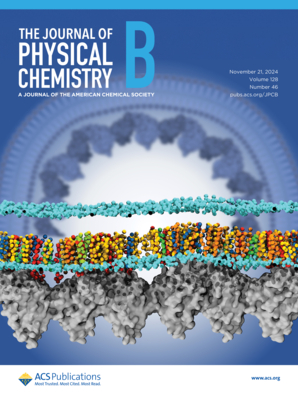The Role of Electron Donating Ability of Pendant Groups in the Photophysics of Donor-Acceptor-Donor Diaminoterephthalate Derivatives.
IF 2.9
2区 化学
Q3 CHEMISTRY, PHYSICAL
The Journal of Physical Chemistry B
Pub Date : 2025-07-24
Epub Date: 2025-06-30
DOI:10.1021/acs.jpcb.5c02113
引用次数: 0
Abstract
The electron-donating ability of the pendant group has been found to have a very strong influence on the excited state processes of donor-acceptor-donor diaminoterephthalate derivatives. The derivative with the strongest electron donating moiety is found to have the maximum degree of stabilization of the dipolar excited state in polar solvents, while the emission of the one with the weakest electron donor originates from a relatively less stabilized charge transfer state. Blue shifted emission band along with significantly increased lifetime at low temperature (77 K) bolsters the contention behind intramolecular charge transfer (ICT) as the main excited state process involved in this library of molecules.
垂坠基团给电子能力在给体-受体-给体二氨基对苯二甲酸酯衍生物光物理中的作用。
悬垂基团的给电子能力对供体-受体-供体二氨基对苯二甲酸酯衍生物的激发态过程有很强的影响。在极性溶剂中,具有最强电子给体的导数具有最大程度的偶极激发态稳定,而具有最弱电子给体的导数的发射来自相对不稳定的电荷转移态。在低温(77 K)下,蓝移发射带和显著增加的寿命支持了分子内电荷转移(ICT)作为该分子库中主要激发态过程的争论。
本文章由计算机程序翻译,如有差异,请以英文原文为准。
求助全文
约1分钟内获得全文
求助全文
来源期刊
CiteScore
5.80
自引率
9.10%
发文量
965
审稿时长
1.6 months
期刊介绍:
An essential criterion for acceptance of research articles in the journal is that they provide new physical insight. Please refer to the New Physical Insights virtual issue on what constitutes new physical insight. Manuscripts that are essentially reporting data or applications of data are, in general, not suitable for publication in JPC B.

 求助内容:
求助内容: 应助结果提醒方式:
应助结果提醒方式:


